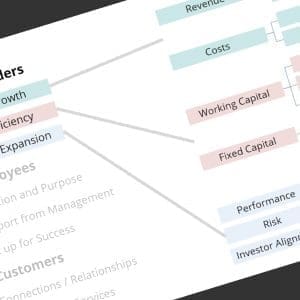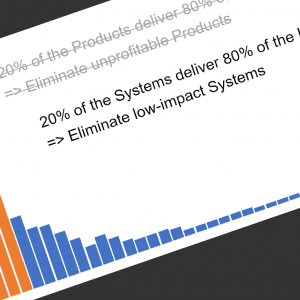All projects should have a clear objective, a practical plan,
and an understanding of the costs and benefits to get the thing done.
Easy to say, but a lot of project teams struggle to crisply and clearly define specific business benefits. One way to move the process forward would be to have a clear understanding of the types of business benefits you might claim.
Hard benefits come from firm commitments to make measurable differences in the amount of revenue generated or savings realized. When claiming hard benefits, the business manager will actually increase their revenue budget (or reduce their expense budget) because of the impact of this project.
-
Real, measurable “Top Line”: volume / revenue growth
-
“I will be able to sell 10% more …”
-
“Market share will grow 2% …”
-
“This new product line will generate 5MM pounds incremental sales …”
-
-
Real, measurable “Bottom Line”: cost reduction, FTE reduction (people)
-
“I will cut 10% of my use of electricity …”
-
“I will eliminate two FTEs [positions] …”
-

Soft benefits come from the strong belief of the business manager that the benefits will be there – but they may be hesitant to make changes to their budget. The hesitation may be there because there is some risk of attaining the benefits from other factors; or, the savings are based on unsubstantiated estimates (i.e. “educated guesses”, aka onager heuristics). When claiming soft benefits, the business manager may not necessarily increase their revenue budget (or reduce their expense budget), hedging against other factors.
An important type of soft benefits is Cost Avoidance; a project that automates a manual process could allow the company to increase the number of transactions processed without adding incremental headcount. You haven’t reduced the operating budget, but you have enabled more productivity without additional cost – this is cost avoidance, and it is an important soft benefit.
Benefits that are subject to risk could be dealt with by making them soft benefits; if the manager is confident of the magnitude of the savings (”… this will cut 20% off the cost …”) but not of the likelihood of the savings (”… if everything goes our way …”), then you should call the total amount a soft benefit.
-
Anticipated “Top Line”: volume / revenue growth
-
“I will be able to sell 10% more, as long as …”
-
“Market share should grow …”
-
“This new product line gives us a leg up on 5MM pounds incremental sales …”
-
-
Anticipated “Bottom Line”: cost reduction, FTE reduction (people)
-
“I will cut 10% of my use of electricity …”
-
“I will eliminate two FTEs [positions] …”
-
-
Anticipated “Bottom Line”: cost avoidance
-
“… this will allow me to process three times the volume …”
-
“… this will eliminate downtime …”
-
Productivity – Many systems projects involve automating manual processes and/or streamlining overly complex processes. Productivity is increased when it takes less time for fewer people to generate more work and more results.
Productivity benefits are quantified as a reduction in the total number of effort-hours per month required to perform a task. We often speak in terms of full time equivalents, or FTEs; to keep the math simple, one FTE is about 2000 hours of work per year.
Productivity is a soft benefit because we do not always remove people from the work force when implementing productivity improvements. Typically, the aim of any automation is to free people up to do other process management or analytical tasks. Note, however, that you can turn productivity into a hard benefit by reducing either overtime or headcount.
Note also that it is difficult to establish a common and fair hourly rate for a worker, due to many factors (including job type and geographical wage rates). For this reason, it is sufficient to express productivity in terms of labor hours saved.
Next: Marching down the P&L and the Balance Sheet





Comments (0)